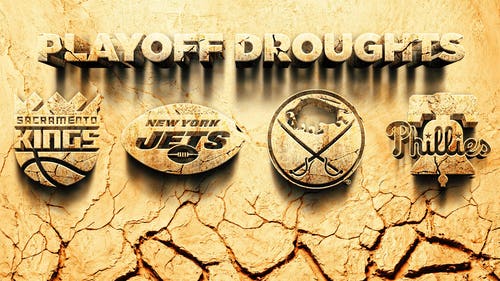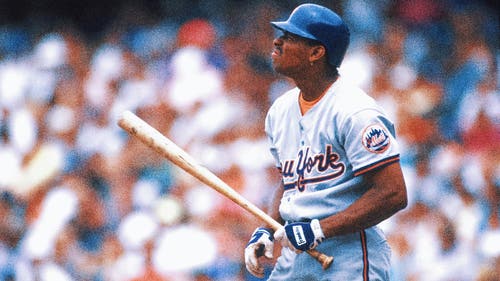
Rosenthal: Will Dodgers stick to Phase 2 plan or keep adding payroll?
Phase Two, the Dodgers keep talking about Phase Two. A greater emphasis on scouting and player development, an eventual rollback of the team’s massive payroll.
Well, if Phase Two is real — as real as, ahem, the Yankees’ stated desire to stay under the $189 million luxury-tax threshold — here is how the plan should unfold:
• With the team refraining from signing free-agent shortstop Stephen Drew long term, a move that would block shortstop Corey Seager, perhaps the team’s best prospect.
• With the team declining to acquire Rays left-hander David Price, who likely would cost the team Seager and several other top prospects, and further increase payroll.
• And finally, with the team ultimately trading outfielder Matt Kemp. Such a move would save the team tens of millions and perhaps bringing in quality young talent.
Well, the Dodgers are disinclined to sign Drew, according to major league sources. They’re publicly downplaying their chances of landing Price. And they’re declining comment on Kemp, even after the outfielder’s agent, Dave Stewart, said he received an assurance from Dodgers general manager Ned Colletti that Kemp would not be moved.
A near-perfect rollout, thus far, of Phase Two.
The question is, will the Dodgers stick to the plan?
Price is awfully tempting; a rotation headed by Clayton Kershaw, Price and Zack Greinke would be ungodly. But if the Dodgers make such a move, they might as well sign Drew; they would be going all-in, and likely parting with Seager, anyway.
We’ve yet to see a limit with the Dodgers’ new ownership, yet to see them draw a line. They spend money to make money, and they’re quite successful at it. So, if they need to keep three big-money outfielders as part of a four-man rotation, fine, no problem.
In reality, though, the time is simply not right to move Kemp, not when his value is down as he recovers from surgeries on his left shoulder and left ankle. Perhaps the trade talk will revive in spring training if Kemp looks healthy. But even then, the Dodgers might be better off waiting.
Left fielder Carl Crawford probably is only a 110- to 120-game player, at this stage of his career. Top outfield prospect Joc Pederson is not yet ready for the majors. If Kemp has a big year, the Dodgers will be in much better position to get value next offseason, when the free-agent market for outfielders will be thin and Kemp’s contract will be down to five years and $107 million.
The Dodgers still could trade Kemp before then — he seems to have ticked off someone in upper management, though few seem to know who or why. Trading Kemp could haunt the franchise; the team that gets him will be getting a motivated player. But while keeping him will protect the club against injuries in the outfield short term, a deal eventually will be inevitable.
That is, if the Dodgers are serious about Phase Two.
(Rare) praise for the Mets
Mets fans are understandably disgruntled, understandably skeptical of ownership, understandably wary even of moves that seem to make sense. But at this point, it’s difficult to argue that these are the Same Old Mets, unwilling to spend, destined to fail.
The Mets likely will not contend in 2014, but at least they are taking necessary steps to become more competitive. They’ve invested a combined $87.25 million in free-agent right-hander Bartolo Colon and outfielders Curtis Granderson and Chris Young, and they’re not done yet.
Their next step should be a trade for a young shortstop such as the Diamondbacks’ Didi Gregorius. A trade of first baseman Ike Davis also is likely, and the Mets can redirect his projected $3.5 million salary toward needed bullpen help.
Some fans want to see the team sign Drew, a move that would make little sense, seeing as how he likely would cost a minimum of three years, $45 million. Some fans also wish the Mets had signed Robinson Cano, flexing financial muscle the way a big-market team should.
At some point, more dramatic expenditures will be appropriate. But at the moment, it’s difficult to argue — with right-hander Matt Harvey out for the season — that the Mets should splurge in such fashion now. They’re proceeding the right way, making sensible moves, taking a piecemeal approach.
Yes, plenty of money came off their payroll. Yes, ownership should have spent more all along. Still, the Mets deserve more of a benefit of the doubt than they did two weeks ago. Not a full benefit, mind you — ownership is still a long way away from earning such confidence. But recent developments are at least encouraging, and that’s a start.
Mariners' portrait incomplete
Mariners fans rival the Mets’ for pessimism, and their distrust remains warranted even after the $240 million signing of Cano, $6 million signing of Corey Hart and trade for Logan Morrison. Rival executives view the Hart and Morrison moves as somewhat incoherent; CBSSports.com’s Jon Heyman had a terrific line, saying the M’s acquired four knee surgeries in a span of 15 minutes. But as with the Mets, it’s best to reserve judgment.
I’ve made my distaste for store-bought teams clear, and I’m skeptical that the Mariners will spend their way into contention. But now that the M’s have got the ball rolling, aren’t we all fascinated to see how this plays out?
Free-agent outfielder Nelson Cruz remains almost a must-have; Hart, after missing all of last season because of injury, cannot be trusted to be the team’s principal right-handed threat. The addition of another starter also is a priority. If the Mariners can add Price to go with Felix Hernandez and Hisashi Iwakuma, hoo boy. If one of their younger starters also matures quickly, even better.
The Mariners think that Hart might be adequate in the outfield, a belief that his former team, the Brewers, did not necessarily share. Some in the Seattle organization want to continue the Dustin Ackley experiment in center, and believe that new manager Lloyd McClendon will be an asset to their young hitters. But let’s face it, the Mariners’ failure to develop young talent is the reason they’re in this position.
In any case, the M’s can’t stop now. They need to keep adding established talent to max out on the early years of Cano’s contract, when he still figures to be at his peak. The one area where they might (wisely) refrain is the bullpen market; the M’s originally planned to add a closer but now seem more inclined to use internal options.
Trade or no trade, Gardner a goner
The Yankees’ unwavering support of outfielder Brett Gardner is not simply a disguised attempt to build his trade value. GM Brian Cashman raved about Gardner even when he was a young player, pointing out — correctly — that the Yankees appreciated him more than the rest of the industry did.
Fair enough, but the Yankees layered over Gardner when they signed free-agent center fielder Jacoby Ellsbury to a seven-year, $153 million contract. Gardner is probably better in center than Ellsbury but now he will play left and probably hit down in the order in his walk year.
There are worse fates, and the potential of an Ellsbury-Gardner combination both offensively and defensively intrigues the Yankees — intrigues them to the point where club officials say it is doubtful that Gardner will be traded.
The availability of the right starting pitcher likely would change that thinking, but it’s difficult to imagine who that pitcher might be. Of course, it’s also difficult to imagine the Yankees signing Gardner to an extension after this season. He will want to hit leadoff, and want to play center.
Those opportunities no longer exist for him with the Yankees.
Favorite moments of the Winter Meetings
• The reported fight between two agents in the parking lot, an incident that was the talk of the meetings on Wednesday night.
“Who are the agents who fought?” one agent asked me. “I’ll trade you some big info for the answer.”
• Miguel Cabrera’s retweet after seeing a photo of me, ESPN’s Enrique Rojas, Yahoo!’s Jeff Passan and FOX Sports teammate Jon Paul Morosi on Twitter.
“Los jinetes del beisbol,” Cabrera said. Translation: The jockeys of baseball.
For the record, I am taller than Enrique — I think.
• The emergence of high school senior Chris Cotillo as a reporting star.
Cotillo, 18, broke two major stories on Twitter this offseason for MLBDailydish.com — the signing of free-agent right-hander Ricky Nolasco and the Nationals’ acquisition of righty Doug Fister from the Tigers.
The New York Times and Washington Post are planning features on Cotillo, who is too mature and modest to say, with complete accuracy, “I’m kicking Rosenthal’s ass.”
• My exchange on MLB Network’s “Hot Stove” with White Sox VP Ken Williams, who kept calling me “Rosenberg,” insisting that I did not deserve to be called my actual name because I had lost my reporting touch.
I responded by vowing to break a White Sox story and then stand over Williams the way Muhammad Ali once stood over Ernie Terrell, shouting, “What’s my name?”
The blessed moment has yet to occur, but it’s coming. Williams once referred to my sources as “snitches.” I replied that they were fine practitioners of democracy. And trust me, democracy will carry the day.
The incident occurred early during our FOX broadcast. Tomczyk wrapped the finger so I could finish the game, and Snell stitched me up afterward in the Pirates’ training room.
I wanted to cry like a baby while getting stitched, but first baseman Justin Morneau, who grew up playing hockey in Canada, was sitting nearby, decidedly unimpressed.
Once again: Thanks, Ed. And thanks, Todd.
My pinkie is in fine working order!










